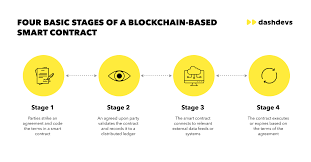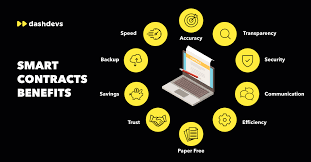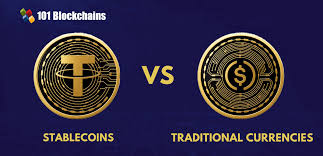Smart Contracts: How They’re Automating Agreements

Introduction
Smart contracts are one of the most revolutionary innovations in blockchain technology. Unlike traditional contracts that require lawyers, intermediaries, or regulatory authorities to enforce, smart contracts do digital contracts by themselves. They are written in code and stored on the blockchain, automatically implementing once certain conditions are met .
The technology is transforming industries such as finance, supply chains, healthcare and real estate by eliminating intermediaries, reducing costs and increasing confidence.
What are smart contracts?
Smart contract is a piece of computer code stored on a blockchain . It follows an “IF then” logic:
If Condition A is met, Action B will be implemented .
For example:
If a buyer sends cryptocurrency to the seller, ownership of a digital asset (such as an NFT or token) is automatically transferred.
Since they run on decentralized blockchain networks, smart contracts are transparent, flirtatious and viable without external parties.
The main features of smart contracts
Automation-no manual verification or third-party involvement required.
Transparency-all participants can view the code and terms of the contract.
Security-blockchain encryption makes them resistant to fraud and tampering.
Cost-effective-reduces the need for legal fees, banks, or brokers.
Speed transactions are processed immediately once conditions are satisfied.
Distrustful environment-no need to “trust” another party; the code enforces the rules.
How do smart contracts work ?
Contract coding-developers write contracts using blockchain languages such as consolidation (for Ethereum).
Deployment on Blockchain-the contract is uploaded and becomes unreliable.
Dynamic events-the contract monitors external data or inputs (via oracles).
Automatic execution-when the default conditions are met, the contract is automatically executed.
Real-world use cases of smart contracts
1. Finance and banking
Automatic loans, insurance claims, and payments.
Example: a loan agreement that automatically eliminates collateral when the borrower defaults .
2. Supply chain management
Tracking goods from production to delivery .
Example: if a shipment reaches the port, the payment is automatically issued to the supplier.
3. Health care
Secure patient data sharing between hospitals .
Example: patients can only give access to their records when certain conditions are met.
4. Real estate
Simplifying the sale and rental of property .
Example: rent payments automatically provide digital access to the apartment (smart lock integration).
5. Nfts & digital assets
Artists can get royalties automatically every time their NFT is resold.
6. Insurance
Automatic claim settlement.
Example: flight insurance that pays automatically when the flight is cancelled .
Benefits of smart contracts
Eliminates intermediaries
Increased efficiency and confidence
Reduces fraud and conflict
Offers global access
Challenges and risks
Despite their potential smart contracts face some obstacles:
Coding errors-a small bug in the code can cause financial losses.
Lack of legal identity-many countries do not yet recognize smart contracts as legally binding .
Scalability issues-large networks like Ethereum may face higher gas fees and congestion.
Oracle problem-smart contracts rely on external data sources (oracles), which can be manipulated.
The future of smart contracts
With ongoing innovations such as Ethereum 2.0, Layer 2 solutions, and cross-chain compatibility, smart contracts are becoming faster, cheaper, and more reliable. Governments and businesses are also seeking legally enforceable digital contracts, which could bridge the gap between blockchain and traditional law .
In the future, we can look at Whole industries – from banking to healthcare – running on automated, automated contracts, mitigating failures and creating a new era of digital trusts.
Result
Smart contracts are reshaping how people and businesses communicate by automating trust. They eliminate intermediaries, reduce costs, and speed up the process, all by ensuring fairness through invariable code. While challenges remain, their increased adoption signals that the future of contracts will be decentralized, automated and borderline.







